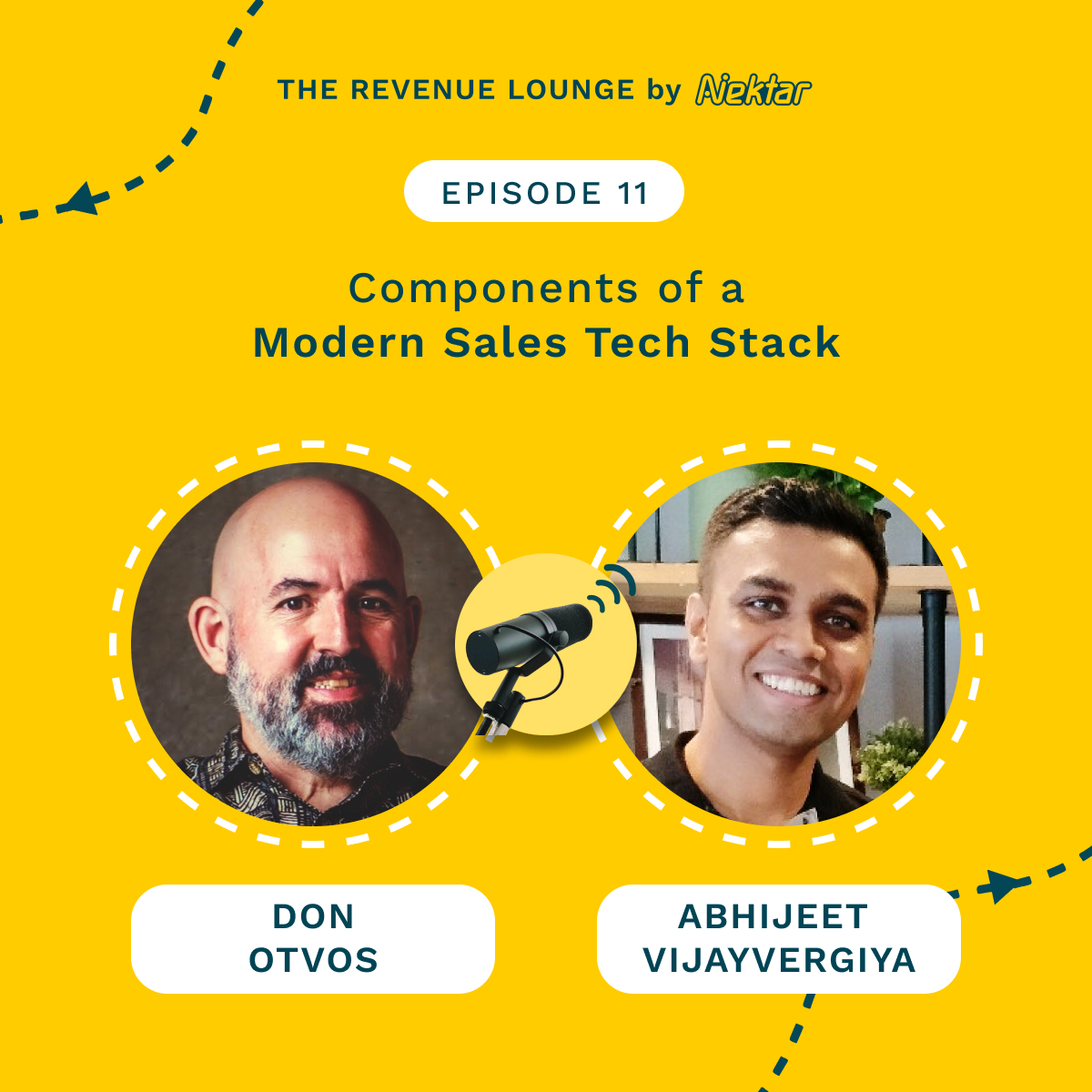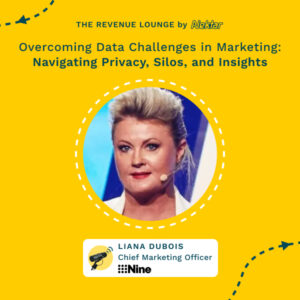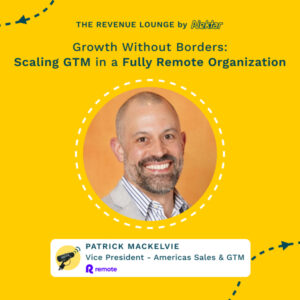Ep #9: Navigating the Sales Tech Landscape
November 9, 2022
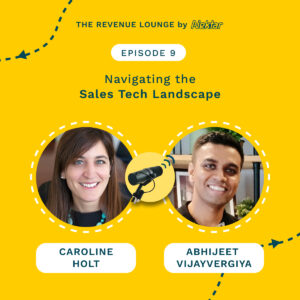
About
The Revenue Lounge
The podcast covers stories from leaders across RevOps, Sales, Customer Success, GTM, Data and Marketing about what drives these functions and what advice they would share with our listeners. With 3 seasons recorded, the podcast currently features 50+ enterprise leaders in the B2B SaaS domain. Tune in to hear from the best in the business
Extracting value from a sales tech stack continues to be a frustrating challenge for revenue leaders. The market has a plethora of tools spread across a number of categories.
How do you select the best tools for your tech stack?
How can you ensure you’ll derive value from this investment?
Our guest today will help us decode some of these mysteries around sales tech stack. We have Caroline Holt with us who is a sales tech enthusiast and expert.
She has been a star sales performer – generating nearly $8M in revenue across 5 years of direct sales. She gets both the direct sales and sales coaching/enablement world intimately. She is a top-notch sales professional who is passionate about sales enablement, training, and reducing friction in the sales process.
Let’s hear it from her!
Want to learn more about Nektar?
Talk to our team – https://bit.ly/3zVXNxz
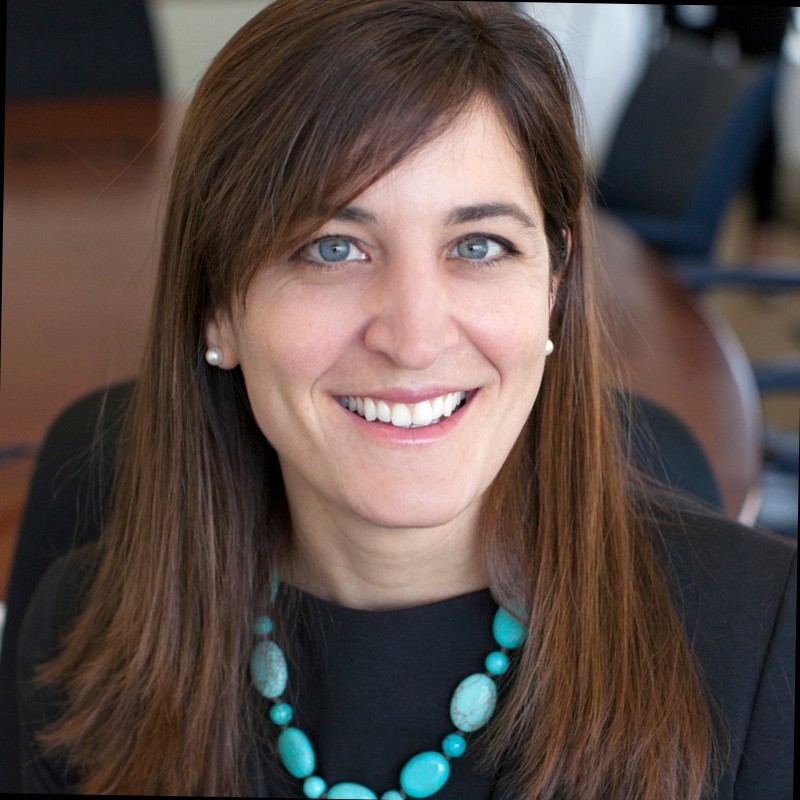
[00:00:00] Welcome to the latest episode of The Revenue Lounge. So as we get started, I just want to set the context for our audience for today’s episode. What we are going to talk about more is around sales technology. I think we all keep hearing about new technology that is getting built out a lot of evolution of tech stack that has happened over the last five to seven years, especially in the sales space.
[00:00:20] So looking at how the space has evolved, I would love to chat more about it. Um, so how do we go ahead and select tools from your tech stack? How do we ensure. Folks derive value out of the investment they make into these tools. Welcome up to this episode, Caroline. So Caroline has a decade long experience in dealing with these mysteries around sales tech stack.
[00:00:40] She’s a sales tech enthusiast and expert. And she has been a star sales performer generating nearly 8 billion in revenue across five years of direct sales. Caroline, thanks for coming on the show. Why don’t you start by telling something about yourself and your current role at Bonterra.
Thank you so much for having me.
[00:00:56] And I am Caroline Holt. I’m the Vice President of Revenue Training and Enablement at Bonterra, which you may or may not have heard of. It’s actually, I came to boner for this role. It is designed to bring about 11 organizations in the technology space that all serve social good and social impact together. So we’ve got three primary parts to what we do.
[00:01:17] We work in the CSR and corporate philanthropy space. So how are companies and employees, um, of those organizations giving their time and, and talent and money to different non-profit organizations? And then how do they disperse those grants? And then the second piece is really how do non-profits identify and manage their donors and supporters?
[00:01:39] How do they get them out? Advocating for the work that they’re doing. And then last but not least, how do those non-profit organizations or public sector organizations actually take those resources and get them delivered to clients and the people for whom they deliver services? So I came to do this role, bringing these organizations together, building a training and enablement function for the first [00:02:00] time.
[00:02:00] Had a couple of really talented folks that I got to pick up as I got here, but I’ve really been. Building out the team, building out the communications, the enablement strategy, all that good stuff. So that is what I do today. Now, a year from now, it probably will look pretty different because hopefully we’ll be in a really great place from a brand and organizational integration perspective.
[00:02:18] Yeah, that sounds very exciting and very interesting. It’s not every day that I speak to somebody who’s focused on doing something at a space for non-profits. So it’s quite interesting and yeah. Great to hear your perspective around how, how the sales are, uh, business development happens in this space. So before we get there, it’ll be interesting to know your story.
[00:02:39] How did you get into the revenue space in general? And I think enablement is something that you spent a lot of time. We look forward to hear more about how, how did you get into the space in first place?
[00:02:53] Sure. My first sales job was actually to be working at the Gap in retail as a 16 year old where I was kind of [00:03:00] outselling the folks who were already college graduates, but I never really thought I would be a sales professional. I graduated from college, I went into a product role right out of college, and that role required a lot of.
[00:03:11] Interviewing and engaging with customers and prospective customers on their best practices. And through that I realized that I might actually be a good business development rep, so I moved over to be an SDR. I was a top performing SDR calling into CFO’s general counsel at Fortune 500 companies. and working for our top sales person.
[00:03:30] So I went to work for the corporate executive board, which is now part of Gartner, and so I moved from a SDR role into a sales role where I was a quota carrier for four years. They took a chance on somebody who did not have sales experience, but had been a really top performing BDR and then. In that role, I actually saw that we were bringing all these great people on.
[00:03:51] They were, you know, business school grads, people with extensive sales experience in some cases. And we basically brought them in and had them join often me [00:04:00] for, you know, listening to three or four meetings on the road. And then we kind of let them out and hoped that they figured it out. So, not surprisingly, we had a pretty high rate and under performance in some of those folks.
[00:04:12] And so a big part of. I did as an individual contributor was a lot of sales, coaching and development, particularly for those business development reps who are looking to get into a, a career in sales. So I built a bootcamp program and other things. So inadvertently I created our first enablement program at the corporate executive board.
[00:04:30] Or CEB. I came off the road in 2004. That was my, I won my freedom on a president circle trip with over a game of back gamon. The, the stakes were that I could come off the road and build a sales training program, and so I did that. I did that for three years for CEB, and then I left in 2007 and hung my own shingle as a consultant.
[00:04:48] So I specialize in a lot of the sales talent related content, particularly for new heads of sales and new CSOs. But looking at sales talent assessment. Uh, [00:05:00] practices, career pathing, onboarding, upskilling development, and all the tech stack, which, um, when I started as a sales rep, my tech stack was my telephone, my fax machine, and Hoovers.
[00:05:10] So I think in terms of how I got into the space, it was an interest in changing. Um, what my experience was as a rep, which I think is also why a lot of people like to get into enablement now, is that they were good quota carriers and, but they really wanna do something that’s more impactful for their organization.
[00:05:27] They see opportunities. So that’s that long winded way of how I got into enablement, but I love it and it continues to evolve. It’s such a incredibly cool profession. Yeah. I’m quite happy that you mentioned you started as a b I think that is one role that really shapes. It’s the best way to like start sales career.
[00:05:45] It’s a brutal role. Yeah. One really slogs a lot, but there’s so much of learning that happens through that role and yes, it prepares one for a great career in sales. I personally been a media myself, so I totally relate with it. It’s one of the best ways to [00:06:00] learn quickly about all things revenue. So it’s quite exciting and incredible journey that you mentioned and your background with cb.
[00:06:07] Later on Gartner there. I’m sure you’ll have like a lot of inside views as well in terms of tech stack and the evaluation, considering they’re one of the thought leaders in the space. Which brings me to the next question, which is around tools in general, right? We spoke about the plenty of tools, which are out there across multiple categories, so it gets very confusing for an average buyer out there.
[00:06:28] The list is daunting. It’s very difficult for anybody who’s procuring a solution out there to go about shopping and staffing their. So what do you think of the current sales tech landscape? What’s your perspective about it? And uh, take us through the way it has changed over the years. I think you’ve been in the industry for quite some time, so how have you seen that change trickling down and what do you see it looks like now and maybe in the future?
[00:06:54] Well, it really has. Not only transform, I mean, it’s exploded, right? The, [00:07:00] the technology has disrupted sales. And even, you know, when I hear somebody say, Hey, well I, I didn’t learn to sell that way or the way I always did it was this thing. I think the buying process in some cases has not changed over the last 20 years, but the way we sell and the way that the buyer wants to purchase has changed.
[00:07:19] And so, you know, when I think about my role as a BDR early. I was calling, I was faxing, I was emailing, but I could get to someone typically. Right. And I think in some cases the proliferation of things like. Cadence tools that allow people to drop somebody into a constant flow of information has actually hindered our ability to get to people that we want, who might actually need what we need to do.
[00:07:46] So to the, our overarching question of how technology has changed, I think in some ways it’s changed in a really incredible way because I am an efficiency geek. I like removing friction from the sales process, but I think that sometimes we actually get in our own [00:08:00] way. We actually. Inefficiency because of how we purchase technology.
[00:08:04] So I think of the tech stack. I think you can think about them in terms of where your business is and what you need to be successful. And I think that that’s actually the biggest challenge right now. So when I talk to VCs or private equity companies, so I, you know, know folks who invest in that space, their expectation of what a small start-up organization has and what they.
[00:08:24] Is often not matched with the level of sophistication of their sales force, or they’re hiring salespeople who have a very sophisticated level of understanding of sales technology, which that organization doesn’t have. So the first thing that I would say is that when you think about technology, technology is a great solution.
[00:08:41] If you have really good process to start with and people to manage the automation, ongoing configuration, updates, maintenance, and so, Technology is gonna be great at a foundational level. So the first thing you need is a way to engage with people, whether that is your regular old [00:09:00] telephone and email, or whether that is some sort of dialer tool or something so that you’re capturing that information and then you need some place for that information to live.
[00:09:09] So you need some sort of CRM, right? To be able to capture that information, figure out who you’ve been talking to, what that’s been like, if you’re opening opportunities, what that opportunity looks like over. Then you need to figure out what’s actually happening in those calls. So I, you know, some sort of conversational intelligence, which I used to do as, you know, riding along with people.
[00:09:29] I would literally get in calls. I mean, there’s, there’s still a lot of that that happens. Or prior to Covid, a lot of that was still happening, right? But, Where you’re physically on a call with somebody hearing what’s happening, but you’re really only hearing that call unto itself. And so I think conversational intelligence is actually the most transformative part of the sales tech space over the last few years.
[00:09:49] From both the ability to onboard people quickly, to hear what good looks and feels like to understand for the marketing organization and product organization, what our prospects and [00:10:00] customers are saying about what we do, what we need to do, and how to make it. And then that you can analyze a lot of that data over time in terms of what people are saying in aggregate, not, you know, going to a product meeting and saying, Hey, I talked to this customer the other day and they’re interested in this.
[00:10:13] So our whole roadmap should be focused on it, right? It’s, it provides just a really powerful level of insight, and then you need some way to be able to deliver. Your proposal to your customer, right? So a way to be able to say, This is what it is, this is how it works, this is what it costs, here’s how you sign it.
[00:10:31] But I think for a lot of organizations, they, they don’t ever optimize those four parts of the tech stack, and then they start adding new stuff. They either haven’t gotten it right the first time, or they think that that’s table stakes. And so that foundational piece, particularly the architecture around the CR.
[00:10:48] If that stuff isn’t right, none of the other tech is really that helpful because you wind up buying stuff and building stuff that is, doesn’t really help that whole flow from who are we talking to? What are [00:11:00] we talking to them about? What is, you know, what’s happening with those deals to closing those deals?
[00:11:05] So that’s a really simplistic way of thinking about sales technology. But I would say that most organizations need to start with those fundamental pieces and then start thinking about, okay, once we know, now we need to figure out who those prospects are. So what sort of technology is gonna help us identify who those folks are.
[00:11:20] You can still Google a lot of names and get people that you need. You may not need a sophisticated prospecting tool right out of the gate. So how you build that stuff over time becomes really, really powerful. And then what you do with that data and analytics becomes really powerful over time. I think about the types of stuff that you need right to, to make the foundational investments, and then how do you build from that based on what your organization is trying to do.
[00:11:42] If you are really trying to drive top of the funnel activity, then spend. Six months to a year finding the right sort of solution for that. If you have a proliferation of products and solutions, you need a really great way of managing the assets and resources and having great assets and resources to be able to use to support that buyer’s journey.[00:12:00]
[00:12:00] Um, but sometimes people invest really quickly in a lot of technologies, but they never really optimize them for performance. So the other part is just thinking about having what you can actually bite off in terms of tech investments in any given year to be able to do the right thing for your business.
[00:12:15] Orton. I think that’s a very interesting take, especially around optimizing the performance before introducing too many tools in the tech stack. I think we have had guests on this podcast who have also pointed this out. In fact, if you look at the current trend, most of the sales tech unicorns are actually building a lot of adjacent solutions.
[00:12:33] So almost everybody is competing with everyone within the sales tech space now. And it’s largely happening because I think buyers are looking for efficiencies. They are looking for consider. So that they have fewer tools to manage, which are better integrated with their core systems, including Salesforce and they can optimize for performance.
[00:12:52] So I think what you just mentioned is also a trend that I think we are also seeing in the market and some of the other guests have also shared. So very strongly resonate [00:13:00] with that. And where do you see the future going forward, if you’re to, let’s say, look at next five. What excites you the most and what do you think could happen on the side?
[00:13:09] Sure. Well, capitalizing actually at the end of something that you just said, I think is also really important. So you captured a lot of why there’s consolidation happening, but I think there’s a really important one that a lot of people forget about, which is the rep. And so the thing that I think organizations, you know, there’s a lot of, there’s a land grab happening right now, as you say, right?
[00:13:27] Maybe in some cases they’re creating, they’re moving into adjacent markets. They’re. Other solutions that help build out their feature set. But in all of this, the rep is starting to get lost, right? Because they have to go to five or six or seven different interfaces that is not sustainable or. acceptable, right?
[00:13:45] And so I think that the, the first thing that needs to change, or hopefully will start to change is not the idea that you build a technology so that somebody comes to your app and spends their time there, because that’s not realistic if you have four or five or six different interfaces that you’re expecting a rep [00:14:00] to use.
[00:14:00] But the second is I think we’re gonna see a lot more consolidation, whether that’s consolidation through purchases or organizations increasingly recognizing. Technologies are only good for a business and are only justifiable in your LTV to CAC if you. Are using them and optimizing them, right? They’re not an entitlement in a sales process.
[00:14:19] And so as reps ask and want more money, our costs for acquisition go up and up, right? And so organizations who say, Hey, we can configure in whatever way you want, and that job is yours to do and that call, you know, that never goes live. Those things that will, that I think will start to see more and more of organizations recognize.
[00:14:37] They can’t just have huge professional services fees and expect that people opt out of those and then they, you know, never go live with a solution. And then a year later they drop the solution. That’s, we’re gonna, I think, hopefully start to see a correction in, in how much organizations invest in top level revenue growth relative to ongoing customer engagement support, resourcing to [00:15:00] make sure that people are active and engaged with the solution, like having a solution.
[00:15:04] Gain site or turn zero is amazing, but most people could tell you that the reason that customers are unhappy is that they’re not getting access to people who can help them understand how to use the solution, retrain them on the solution that that shouldn’t be, that that’s an expectation they have of, of partnering with an organization.
[00:15:21] Not that that’s something that’s a nice to have that they need to pay extra money for. Yeah. Yeah. I think technology can only complement the efforts, but automations need to make sure that they have customer focus process people, and uh, I think investments in place to be able to make sure that in a competitive market they’re able to retain and grow their customers.
[00:15:43] So quite in alignment with what you just said. So moving towards the next question, which is, Choosing a sales tool right from the competitive tech stack. And we spoke about how it’s confusing. So if you basically don a heart of a sales leader who’s going to like spend [00:16:00] a hundred dollars this year across technology stack, how should they go about their investment approach?
[00:16:05] Where should those a hundred dollars be allocated? So I would say that like everything in enablement or any of the back office operations, it’s where are your problems? So if you. You know, the business should be investing based on what technology is going to actually help them be more effective, where they’re less effective than they could be today.
[00:16:26] So if it’s top of the funnel on lead sources, lead generation, what’s happening with those leads? If it’s understanding how the assets that you have are performing in the market, if it is resourcing. Sales reps be able to capture more of the information of what they’re doing with the market, if it’s more around the tools to enable, quote, to cash to work more effectively.
[00:16:51] I mean, there are just so many, right? And so you can’t invest in all of them. So I think you have to fundamentally go back to what is the data telling us about how we’re performing today? [00:17:00] And is that different for different segments of the market? Is there one or two tools that we need to invest in? Are there no tools that we need to invest in?
[00:17:06] Um, I also would say that, you know, from a prioritization perspective, you know, we’ve been talking about optimization. I, I would also encourage organizations to think about instead of a new technology, is there a way to invest more in the professional services of the technologies that you have to optimize those and then figure out if that can actually help you close some of the gaps before adding additional.
[00:17:28] Systems because that change management, right? Every time you are bringing in a new technology, not only are you taking people who had a different job before the technology was selected, but they have to participate in the selection process. Then they have to come off the, you know, come off of their day job to identify how you’re gonna implement what that process is gonna be.
[00:17:47] For most technology organizations, they want you to do most of the work on your own, right? And so that’s a lot of time. And then the rollout that change management can be challenging for an organization to ingest. [00:18:00] We’re now going back to work and other things, right? There’s a lot of change happening in the world.
[00:18:03] People are saying, I don’t wanna work 60, 70 hours a week, right? And so they’re not. Gonna, they’re not necessarily gonna be excited to add something new. So, you know, how you think about the rollout then, how you think about the ongoing upskilling and enablement of the new people who weren’t there for the rollout.
[00:18:17] How you think about the iteration and the tweaking of the tool. Um, you know, a tool like a sales loft or an outreach or a groove, you need somebody in that tool every couple weeks making sure that you’ve got cadences updated and you’ve got. Content to be pushing out there. It’s not just a kind of set it and forget it type of thing.
[00:18:34] So making sure that you have the people and the accountability to be able to do that. So your question is an awesome one, which is how do you think about prioritizing technology? I would actually push whoever is thinking about what technology to prioritize, to think more about what does our business need, what do our people need, and how and what do we already have that we optimize.
[00:18:54] Through that technology. And then what do we need next? That’s very interesting point that you mentioned there. [00:19:00] And that brings me to this question around adoption. I think this is a big problem across sales tech landscape, and I’ve spoken to a lot of founders of sales tech companies who are running their own start-ups.
[00:19:11] And then I’ve spoken to a lot of buyers as well. They’ve been guests on the show who have also pointed out issues with adoption. And I think, uh, as per some of the data sources, um, that are publicly a. I think more than half of the sales tools don’t see proper adoption. So what would you recommend to the folks out there who are recurring some of these tools and solution on best practices around driving adoption up?
[00:19:35] Because it’s a sun investment if the reps or the teams are not using tools. That’s right. So tools are great if you have awesome processes and people who can be held accountable for the selection, implementation, and ongoing support and iteration. So the first thing is understanding who is going to use the tool.
[00:19:54] So there’s a lot of great, first of all, there are a lot of great sales people out there, right? There are also a lot of [00:20:00] great tools out there. So understanding who those tools are designed to serve, they need to be at the center of the selection process. So I would say that in organizations where I have come in where tools are underperforming, it’s often because the sales people or the marketing people for whom they were designed to.
[00:20:18] Benefiting we’re not participants in the selection process or there were they. Their voice was one of many, as opposed to one of the central voices. The requirements were more about the reporting capabilities than they were about the people whose material information was actually gonna support what was coming through in those reports.
[00:20:36] So I think a lot of organizations wait until they’ve got, you know, a couple of final candidates, probably one in in particular in mind, and they in court, you know, encourage a salesperson or a couple of sales people to come in or a sales manager to come in and weigh in. I think that the sales people need to be a central part of the requirements gathering exercise in the beginning.
[00:20:56] The second is that they play a role in the pilot. [00:21:00] You know, I work for a tech company. I don’t want my prospects to be doing pilots to be clear, but a pilot process for the organization helps them understand how this technology is gonna work for them, and then helps them build the business case in internally if that pilot is done in a way that supports.
[00:21:18] The way that organization would use it on an ongoing basis. So I think when people use freemium or other things, there’s an opportunity where that person never really understands how it works and so they either have a sour experience or if you don’t have a product led growth strategy where they can upsell right within the product, that’s really hard.
[00:21:32] So taking a pre, you know, taking a freemium product, um, and expecting that somebody is using that as a means of seeing whether that’s gonna work at scale for 50 or a hundred or 200 or 5,000. Right. That’s gonna be, that’s unusual that, that will actually work well. So having a, you know, having some sort of period, maybe it’s a shorter.
[00:21:52] Maybe it’s not the full organization, but a portion of the organization with a path to making sure that the larger organization can use it. Or maybe there’s an [00:22:00] opportunity for them to try a little bit of it. But that the rep who is gonna be responsible for using a lot of this is actually the one kicking the tires on it.
[00:22:06] They’re figuring out whether this works. Maybe you’ve got two sets of reps looking at two different solutions, piloting two different solutions at the same time, and making a decision on one after that, you know, after four or five people have used it and seen how it works. So that’s the second part, right, is making sure that there’s some.
[00:22:22] Testing period to figure out whether that organization is gonna deliver. And then third, that they are then the people who can champion it internally, right? If you’ve got a Rev ops person who’s saying, Hey, this is great. I haven’t sold anything in five or 10 years, or maybe ever, but I think it’s gonna be great for you.
[00:22:39] That’s kind of like a salesperson saying, Hey, I don’t know what your business does, but my technology is great and I’m being held accountable for getting you to buy it from me, so you’re gonna love it. Right? But I don’t think we sometimes think about that. We think about like, Well, I’m just gonna say that this is gonna work great for you.
[00:22:53] So I think that the. You know, kind of like the customer experience in a product, right? If the customer is not central in how you [00:23:00] build and iterate on a product over time, if it’s based on whatever your product person thinks they should be doing, you’re gonna miss the mark in the market. Similarly, you’re gonna miss the mark on tech adoption if the rep or whoever the tool, the end user is designed to support is not intimately involved in the selection practice, and then roll out an ongoing support of that.
[00:23:20] Yeah, I think it’s very important to involve users, cuz go on, are the days when automations would use to buy shelf ware where buyer has signed off, the contract and tool is being rolled out and users have no say. Where I think today’s world where I think users control everything, it’s important to build a user-friendly product and.
[00:23:40] to involve users if, uh, organization have to see their money is getting worth out of the tools that they invest in. So I think great point around focusing on rep experience and usage before those big checks are signed. That brings me to our next question, which is around who manages these tools, right?
[00:23:55] In a typical organization, there is revenue operations that is like sales enablement, [00:24:00] and sometimes they both roll up into one function, or it could be one leader who’s probably having a reporting of this function, but as per you, what should be the best practice? Like who should be procuring and overseeing management of these tools?
[00:24:13] Should it be Rev? Rev should be enablement. What are your. So I think some of that, like the word enablement itself or operations itself has a lot to do with how the organization structures their functions and their roles. So I’ve had both, right? I’ve been in organizations where I’ve had responsibility for most of the tech stack, or at least most of the sales peripheral tools.
[00:24:36] I think whoever has responsibility for it, you have to be clear on what those responsibilities are. So if it’s simply navigating the contracting process, the scope of the relationship, the turning on the users and that sort of thing. I think that that can live in Rev with, you know, if you think about a racy matrix, right?
[00:24:54] Like that can live in an operations function. Heck, it could live almost anywhere. But [00:25:00] what you need to be clear on is who is responsible for. not just the initial rollout, but the, all the new hires that come in. All the people who four months later aren’t using it. You know, who’s tracking that data to see who needs ongoing enablement and support?
[00:25:18] Who’s prioritizing? You know, who’s the person who’s working with the customer success manager at that organization to understand? Why that organization is not getting as much out of the tool as they could. And I think that is either a combination of two people operations and, and enablement also depends on the level of seniority of the people in those functions.
[00:25:38] If you have a Salesforce admin who’s responsible for operations and they have never sold before and they’ve gotten, you know, they’ve done a year or two of kind of. Ops, trailblazer stuff, they’re not gonna be the right person to be managing, negotiating relationships with vendors, getting the most out of those technology tools.
[00:25:55] I think this gets back, you know, kind of like I was saying earlier in terms of prioritization. A lot of this gets [00:26:00] back to the size of your business, what you’re trying to accomplish in your business, who the players are, their level of seniority, their level of understanding of the sales tech space, and then, Budget as well.
[00:26:11] Obviously. I think one really under attended to part of the sales process is the professional services implementation and ongoing support and so, you know, I’ve done it myself. I’ve come into organizations where they’ve opted out of professional services early on and said like, Hey, our team can do that.
[00:26:28] We don’t really need professional services. Which does save money in the front end, but it actually is pretty costly for the business over time. So trying to understand whether we’re paying for that or whether we have the internal resources who can actually dedicate a certain number of hours per month.
[00:26:46] To making sure that they optimize, right? Like if, if a professional services arrangement is saying that we’re gonna give you 10 hours a month, or 10 hours a quarter, or whatever it is of support, you have to assume that that’s somebody who knows the system pretty well. So you, you need to make sure that you’ve got 15 [00:27:00] or 17 hours a quarter.
[00:27:01] If they’re saying that they’ll give you 10, do you have 17 hours a quarter instead to have somebody on your team fully dedicated to the optimization of that solution or the ongoing support of that? And if not, you should be investing in the professional services package because it’s probably significantly less expensive than a fraction of that human capital or the under- utilization of that.
[00:27:21] Yeah, I think, uh, production services is highly underrated. I think it works both ways. The vendors get additional revenue and it also drives better attention and adoption. Solution. And on the customer side, it’s a great cost effective way of extracting the best value from the tech investment without incurring a heavy cost from there and in terms of investment into more headcount.
[00:27:45] So I think it’s a great trade off and a win-win for both parties. Thanks for highlighting that. I think, uh, you mentioned earlier about efficiency as a core focus and driving the right process. I think one of the things that comes into our typical sales process is information. Between [00:28:00] people, between systems, between stages, as you look at the revenue funnel, and these integrations can be complex, right?
[00:28:06] So what would be your biggest tip or advice in terms of establishing some of these integrations across the tech stack or different products that have been used in a typical revenue team? Yeah, such an important question. So integrations. I mean, I think that your understanding of the tech stack when you go into the initial sales conversations is important, right?
[00:28:26] And most organizations will tell you that they can integrate with almost anyone. The question is, do they have an out of the box integration or are you responsible for building that integration? And if you’re an organization like mine right now, if you’re a highly acquisitive organization, or you have multiple business lines that may have different technologies or different instances of the same technology, , that can also be a challenge.
[00:28:48] So I think some of the questions that you wanna explore are things like, you know, what is, what are the out the box integrations that you have, or what’s on your roadmap for out of the box integrations right away? And if your [00:29:00] current tech stack is not represented in those, I would dis discount those vendors unless you have the capability and the, you’re passionate enough about that tech.
[00:29:10] So if it’s truly a, a disruptor, a new technology that there’s no other competition for. , then that may be worth it. But for most of the technology we’re talking about, there are several different solutions that exist in any particular category. And so you can just, like a sales process, disqualify them fairly quickly.
[00:29:27] I think the second is thinking about how many instances of integrations you may need. So for example, right now we have nine different Salesforce instances. I’m. Content management systems. Content management systems can integrate with anything. They can integrate with Salesforce. Oh, we do have a HubSpot as well, but they can’t integrate with nine different instances of the same sales, sales tech.
[00:29:48] They can only do one, right? And so, and I don’t know, maybe, maybe somebody who’s listening can tell me that there’s a content management system out there that can, can integrate with more than one. But I think that’s important as well. So if you are a [00:30:00] highly acquisitive business and you’re likely to bring in additional tech to your stack, how are you gonna solve?
[00:30:06] Right. How are you gonna make sure that either those people that you’ve just acquired can move over and on? What timeline and how does that impact your contracts or that you. Stay separate. And what does that mean for your business? Or are there ways that they can integrate or hacks that you have to make sure that the content and information that you need is getting all the way up to that executive leadership team board level where they’re gonna wanna see they’re not gonna care that your technology doesn’t integrate yet.
[00:30:32] So then there’s a lot of human capital that goes into trying to put, put those reports together when you’ve got disparate businesses. I don’t know if that helps, but I would say those are two of the things as I think about where I am and right now in my career and what I’m trying to work on for my own business.
[00:30:46] Two of the things that I think are really important to, to consider, but I guess the short answer is if it doesn’t integrate with your CRM, like the table stakes are, it has to integrate seamlessly with your CRM and show up and your crm, so, So showing [00:31:00] up, there’s a difference between. integrating with your CRM and actually having that data and information talk to each other.
[00:31:06] Right? So I can have two things sitting on a shelf, but if they’re not talking together, if they’re not like co-mingled, that doesn’t really help me. So it the, they need to be able to talk to each other and actually exchange information that makes my business better. So it’s not integration just. To say that it connects, but really integration of the data and information that’s coming together so that you don’t necessarily have to purchase a middleware solution to be able to read all the data that you have.
[00:31:31] Yeah, that’s a very important advice. And getting these integrations right can actually be solving half the of the problem already. And then you’ve got your core competitive problems to solve. But if you can get these integrations flowing, it just sets up a great GTM. And if the integrations don’t work, then there are different problems which, uh, lead to efficiency issues.
[00:31:53] So very important point and great advice there for our listeners. Yeah. So moving on to our next section, which is a rapid [00:32:00] fire, more to know things about you and like sales in general. So it’s a very quick rapid fire around here. So the first question there would be, what’s one book that you have loved in the recent?
[00:32:12] Ooh. I just read American Dirt, which was amazing. It’s the story of a woman and her child who go from relative wealth to poverty in trying to come across from South America into this country, given the violence that her family was experiencing. It was just. extraordinary and I think helps contextualize a lot of what we may see in the news, but not really understand.
[00:32:36] Moving on to a question related to the field of sales, what would be your favorite part about working in the enablement or the revenue operations role? What’s one thing that you really like about it? I love fixing things, so I never was into Legos as a kid, but I love to find a problem, figure out what the.
[00:32:56] Potential solutions are, bring in the right stakeholders and then fix it and make, [00:33:00] go on to the next part. Yeah. And what would be the least favorite part? Doing that work and having people say that it’s, there’s still a problem or that they need to know where something is, even though we’ve spent a lot of time trying to show them and help them understand where it is that learned helplessness.
[00:33:14] I think in sales as a, a challenge. Yeah. I know it’s also thankless to a great extent. What I’ve also noticed, because a lot times it’s behind the scenes, right? I mean, it’s. A glorified role where you’re wearing multimillion dollar deals or making great commissions with over attainment and accelerators. So it’s also something which is under the radar, but it’s a function which is enabling the whole team.
[00:33:37] So I know where you’re coming from. I’ve been there, experienced it. But yeah, I think there’s a lot of motivation with respect to be able to coach people and be able to make them successful, which gives a great sense of. So I, I do understand how the interplay around aspects of being favorite and having these favorite parts in the similar function.
[00:33:58] Moving on to the next question, [00:34:00] which is around your favorite, uh, leader, what would that be that you personally look up to and, and why? Wow, there are so many good ones. So I could give you a list and if you check out who I follow on LinkedIn, you’ll see a lot of great people to be following too. But one person, well two actually, who I really admire because of the work that they do are Sam McKenna and Amy Va.
[00:34:22] And part of the reason that I admire the work that they do is they’re incredibly giving of their time and. With no expectation in return. Their expectation is that they can build a better career for people. They can build better organizations by providing free access to information and advice. And I think that that focus on other, instead of focus on self is a really important piece for sales leaders.
[00:34:50] Sales enablement. professionals generally, so it’s not any particular thing that they say or do. There are many things that they say and do, but the way that they [00:35:00] express themselves in LinkedIn in terms of their spirit of generosity is really meaningful and something that I emulate. Yeah, and I’m a big fan of both of those ladies, Amy and Sam.
[00:35:10] I think they’ve been really helpful. And I’m also part of Thursday Night Sales, which Amy runs. It’s an incredible community and like everybody’s helping every. So it’s a great community to be around, so shout out to them. Yeah. And moving on to the next rapid fire question. So what is that one advice that has stayed with you, which you received from someone and you’d like to share with us?
[00:35:33] Sure. So when I graduated from college, my dad said, Congratulations, White collar work is never done. And he’s right. There’s always more to do, but that’s not the advice. The advice was the first. Probably, maybe not the first time. One of several times I called him my first year out of college when things were hard and I was starting to feel like, you know, I wanna leave, I wanna go someplace else.
[00:35:59] This is [00:36:00] hard. Um, I, you know, I was still a, a kid, right? I had just graduated from college and so I did things in semesters and I had already been there for six months and it felt hard. How was I gonna do this for a lot longer? And he said, I want you to look at the date. And this is back in the days when I had like an actual flip calendar and that sort of thing.
[00:36:15] And I looked at the date and he said, I want you to go three months, 90 days from now. And I picked out the date 90 days from now. And he said, I want you to write a note to yourself that if your job has not gotten significantly better or different 90 days from now, that’s when you quit. And I’ve used that advice throughout my career because there, there are always hard parts.
[00:36:36] There are. Potholes. Sometimes they’re like sink holes in the road. Uh, but I’ve used that advice. You need that 90 days to, you know, let things process sink in, see what changes, and if it doesn’t change, There is a big wide world out there, and it is time to leave, but if it hasn’t, and my experience has been without, almost without exception, that it does change.
[00:36:58] And then in the times where it hadn’t, I [00:37:00] left. Right? I went and found something else, but that’s been the advice that stuck with me most. Got it. The wonderful piece of advice. Talking about advice, what would be one advice you would like to give to folks who might want to get into enablement, who might want to grow into ahead of enablement one day?
[00:37:16] Okay, well those are two questions, so I’ll handle the, get into enablement and then head of enablement. So the getting into enablement, I think, you know, I love, that’s a huge part of. The fun part of my job is talking to people who think that they wanna be an enablement, and so the first thing is I think you need to establish a both a point of view and a network for that.
[00:37:36] So a network being, you know, who’s the person in your organization that does some sort of enablement or operations, what do they do? Think of it as like a little bit of a, an interview like this, right? Like a podcast. What do you do? What, you know? Tell me a little bit about what your work looks and feels like.
[00:37:51] Understand as a rep, you know, often individual contributors move into enablement roles and, and I will say that unless you’ve been a successful ish, at least, you know, worked [00:38:00] in an individual contributor role for at least a year, it’s really hard to move into enablement. I, I don’t hire people who haven’t had at least that much.
[00:38:08] Because you need to really understand your customer base in order to be able to support them. But I think if you are having some of those conversations and then you start to look online, Sales Enablement Society, Sales Impact Academy has some great sessions. . There are lots of places where you can go to understand more about the sales enablement space and then start to establish a point of view, right?
[00:38:29] There are lots of parts of enablement. It means something different in almost every organization. What is the part that you’re attracted to? And then based on that, or you know, based on whatever is working at your organization, are there opportunities for you to volunteer and do that within your own company?
[00:38:42] Right? So if you can be an entrepreneur, maybe you see that there’s not training that exists for. Can you take, you know, a chance on starting to build some of that and starting to develop an internal reputation as, as doing some of that coaching and development internally, or building some of that training internally?
[00:38:57] Can you ask for professional development resources to maybe take a [00:39:00] class? U D me? U D E M Y has some great. Like easy courses that you can take. LinkedIn Learning probably does as well, right? So what are the resources that you have at your disposal? And then start to talk to more senior people, so you know, going to somebody who is outside your organization to kind of understand what they do.
[00:39:18] I get a lot of those. Questions. I would love to spend tons and tons of time with people on that, but I would encourage people to really understand a little bit more first about what the space is and where you might fit into that space. Start to do some of that work internally in your own organization.
[00:39:32] My guess is that whoever does enablement with your organization will look kindly on that and start to help develop you. And if that doesn’t happen in your own organization, there are plenty of great places to. upscaling and development in a network. Only mentors like me externally. The second part is how you actually become a leader in enablement.
[00:39:50] I do think that that is also really organizational dependent, right? So technology tends to have more enablement. Technology, professional services, [00:40:00] financial services have a lot more training, development, enablement tools than some of the other organizations in different industries. That’s not to say that other industries don’t have them.
[00:40:09] There tends to be heavier investments there. So I would look at, you know, if your organization is not one that is interested in creating an enablement function, there are plenty of other places that are, But then as you think about growing in your career, it’s just like anything else, right? As an individual contributor, the goal that you have in 2022 probably gonna be smaller than the goal that you have in 2023.
[00:40:30] And you need to grow and figure out how you get better at that, maybe without additional resources. Similarly, how do you grow and develop your function? How do you do more with the same resources that you had the year before? How do you figure out what the problems are that your organization has? So people ask all the time, like, How do I get a seat at the table?
[00:40:47] Or how do I get somebody to understand that we need to do this? It shouldn’t be hard to get somebody to understand you need to do this if there’s a business problem that you’re trying to solve. So figure out where the business problems. , figure out how you serve as the [00:41:00] partner, collaborator, and, you know, overachiever on those problems so that you are increasingly brought into the conversations, right?
[00:41:08] And that’s, you know, then, then you start to have more leadership, more span, more opportunity, more resource investment if you’re trying to just ask for money to do things, but you, you don’t really have a clear tie. What that money is, or you’re trying to roll something out but you’re not, it’s kind of falling on deaf ears, then it’s probably because you are working on the wrong stuff.
[00:41:28] It may not be aligned with what the business is. So it may be more of a pet project or an initiative for you, but not seen as business critical, an enablement function and leaders with enablement functions are seen as mission critical for most businesses when done well. So if you do have questions on that, feel free to message me on LinkedIn.
[00:41:45] Yeah, and great answer, Caroline, because this just. To share with our audience how to get into enablement and also how to get into a leadership position. So it’s a great framework for anybody to emulate. And on that note, before you just go, what’s the best way for our [00:42:00] listeners to connect with you? You mentioned LinkedIn.
[00:42:02] How do we reach out to you? So, so the first thing, whether you’re reaching out to me or somebody else on LinkedIn, I would encourage you to actually have a note with that connection. So right now I have, I just checked before this session, but I have 42 people who have reached out to connect with me in the last two weeks, and only five of them put a note.
[00:42:19] And all of those notes were basically about them wanting to sell me something. So as you think about who you’re reaching out to on LinkedIn, give context. Hey, I heard your podcast and I’d love to, to follow you, or I’d love to understand a little bit more about what you’re doing. Or hey, if you’re an individual contributor and you’re reaching out to a buyer like me, right?
[00:42:38] Hey, I saw this thing on your website. It looks like you’re doing this. I’m wondering if you’re interested in understanding a little bit more about how we do this or that, or I suspect that that means that your CEO might be putting on pressure to do this or that. If that’s an area of concern for you, I’d love to talk with you a little bit about it.
[00:42:52] Right? We’re people. And so reaching out on LinkedIn and just kind of connecting with people. I’m at a conference right now. I would never just walk up to [00:43:00] somebody and shove a business card in their face or like drop a business card in front of them and walk away. And I think LinkedIn has given us the impression that we can do the same thing.
[00:43:07] So if you, if you are interested in connecting, I love to expand my network, but tell me why. Why are you interested in talking with me? What is it that you’re looking for? Because I have peers who will come to me and say, Hey, I. That you’re, you’ve got this person in your network, how well do you know them?
[00:43:23] And if my answer is, I don’t actually know them at all, they just sent me a connection request, that doesn’t really help you or me. Right. So if we can, if you wanna connect with me, please feel free to reach out to me on LinkedIn and I look forward to hearing from you. Yeah. So to our audience, they should feel encouraged to reach out.
[00:43:37] To Caroline, but make sure that you include a note on why you want to connect with her. So on that note, I would like to thank you, Caroline, for being a guest today and sharing all these insights about the sales tech landscape, your journey, and how people can grow their career in enablement. It was wonderful talking with you and learning more about you.
[00:43:55] Thanks again and have a great day ahead. Thank you. Thank you so much. It’s [00:44:00] been a pleasure to be here. It’s great to meet you.

Ep #1: Navigating the Downturn with a Hyperfocus on Productivity
Listen Now
Ep #2: How to Win in Times of Uncertainty
Listen Now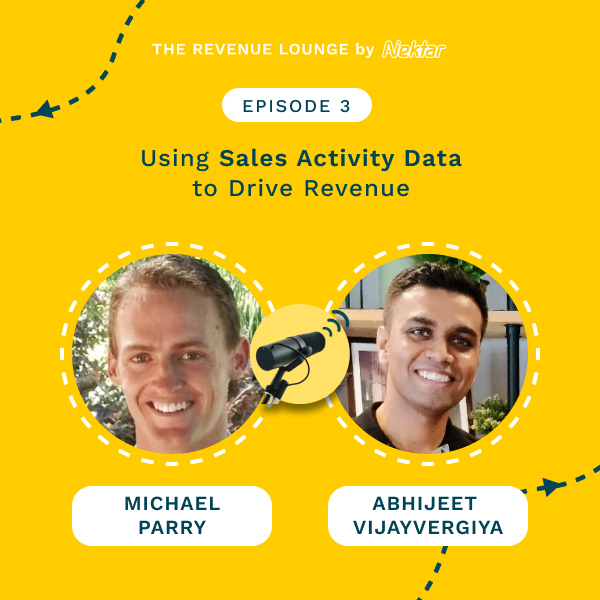
Ep #3: Using Activity Data to Drive Sales Productivity
Listen Now
Ep #4: Creating a Successful RevOps Roadmap
Listen Now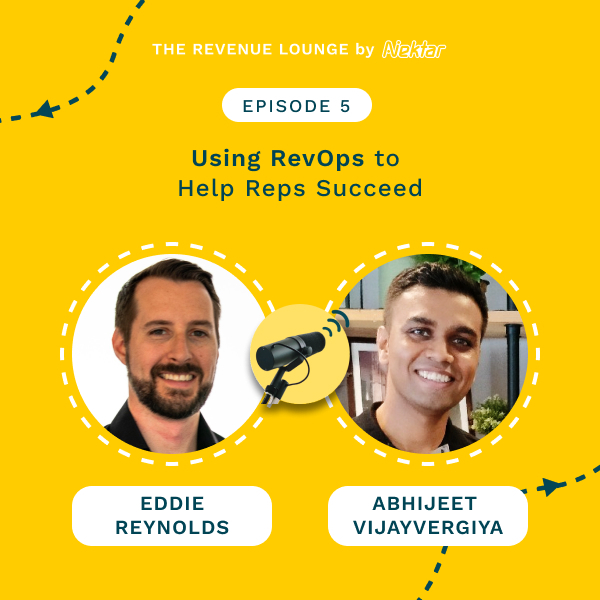
Ep #5: Using RevOps to Help Reps Succeed
Listen Now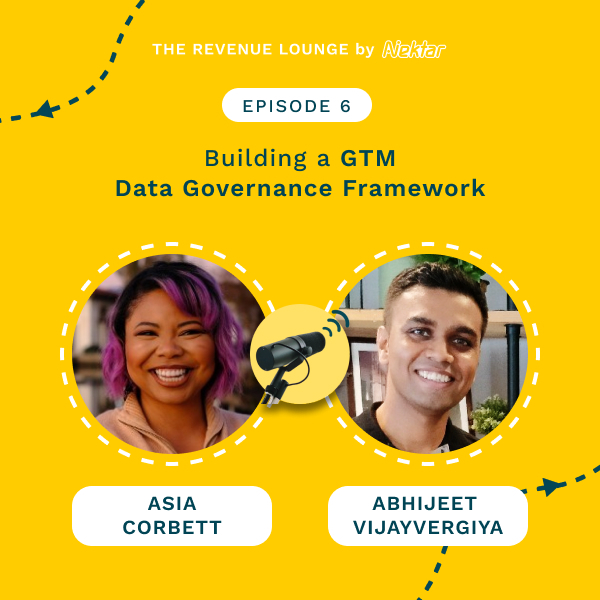
Ep #6: Building a GTM Data Governance Framework
Listen Now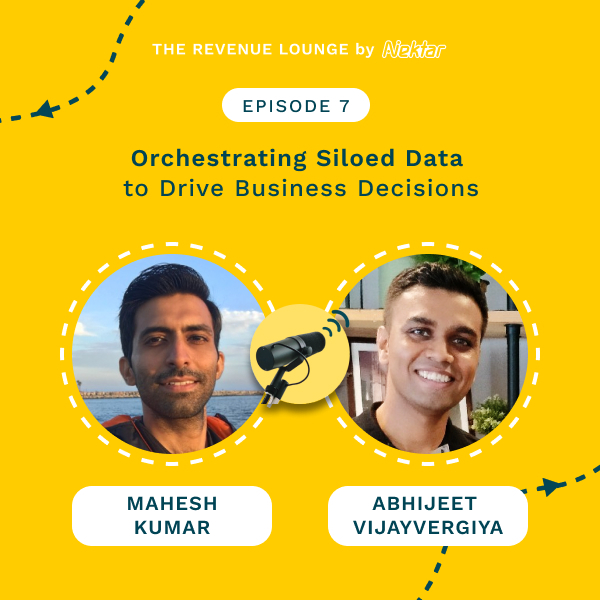
Ep #7: Orchestrating Siloed Data to Drive Business Decisions
Listen Now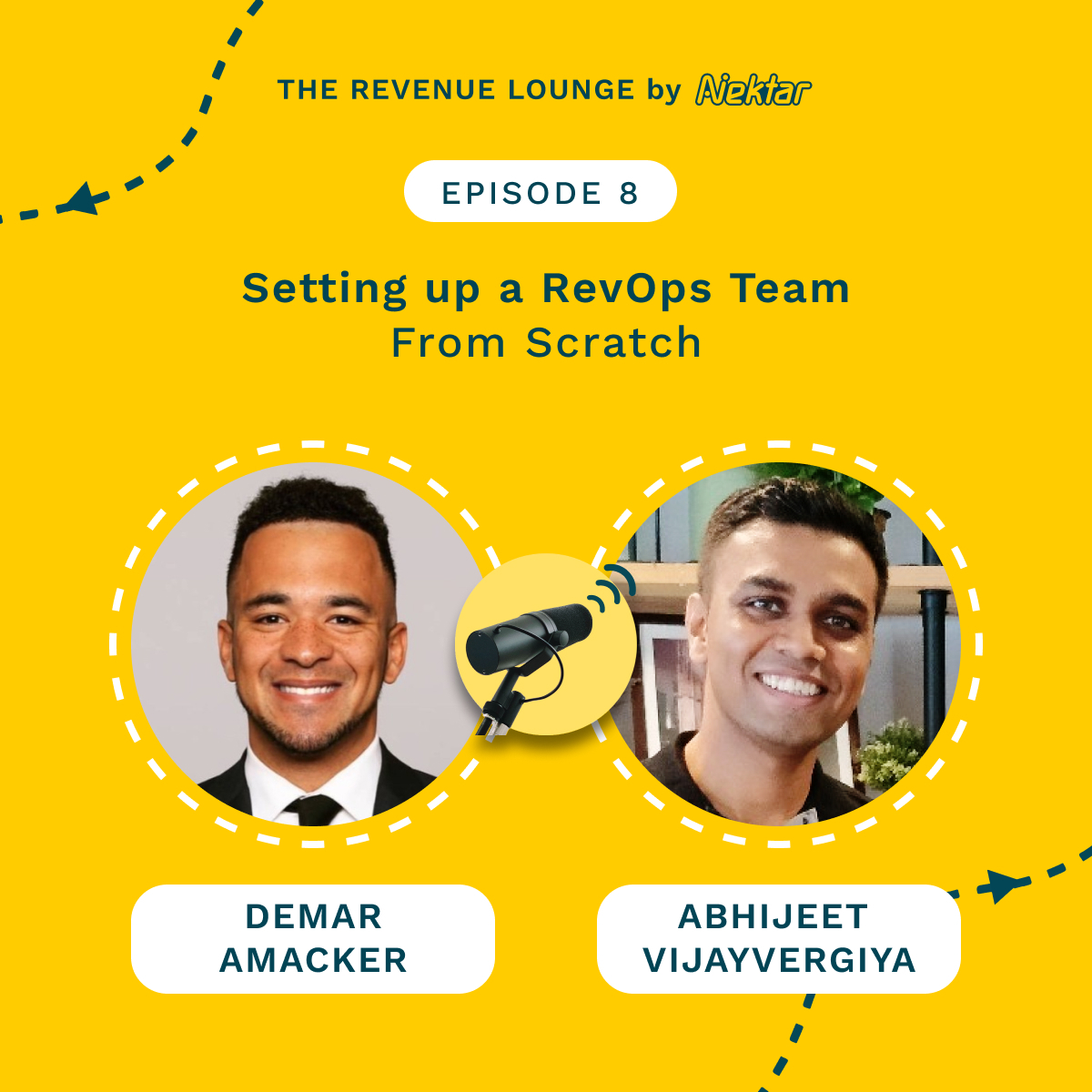
Ep #8: Setting Up a RevOps Team From Scratch
Listen Now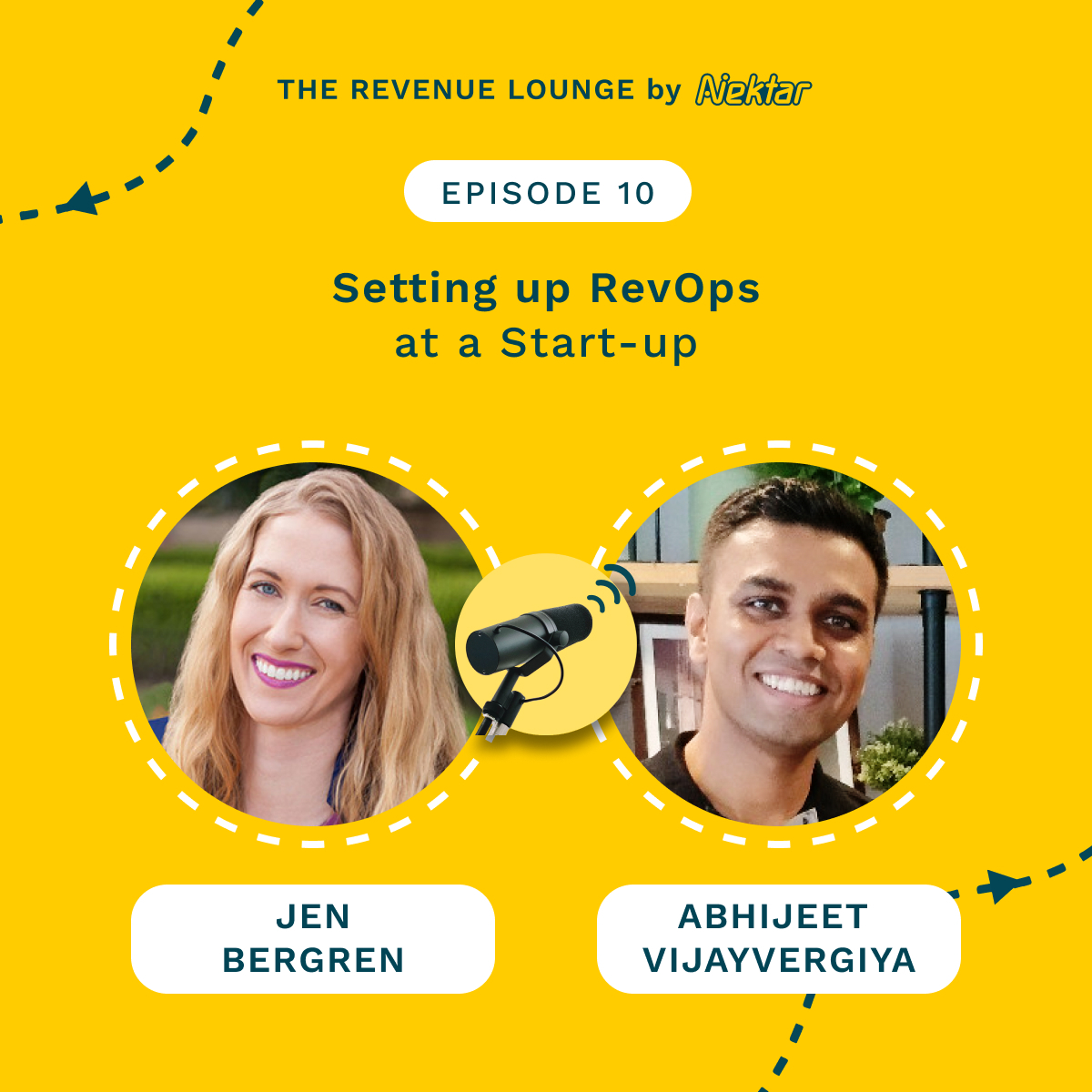
Ep #10: Setting Up RevOps at a Startup
Listen Now